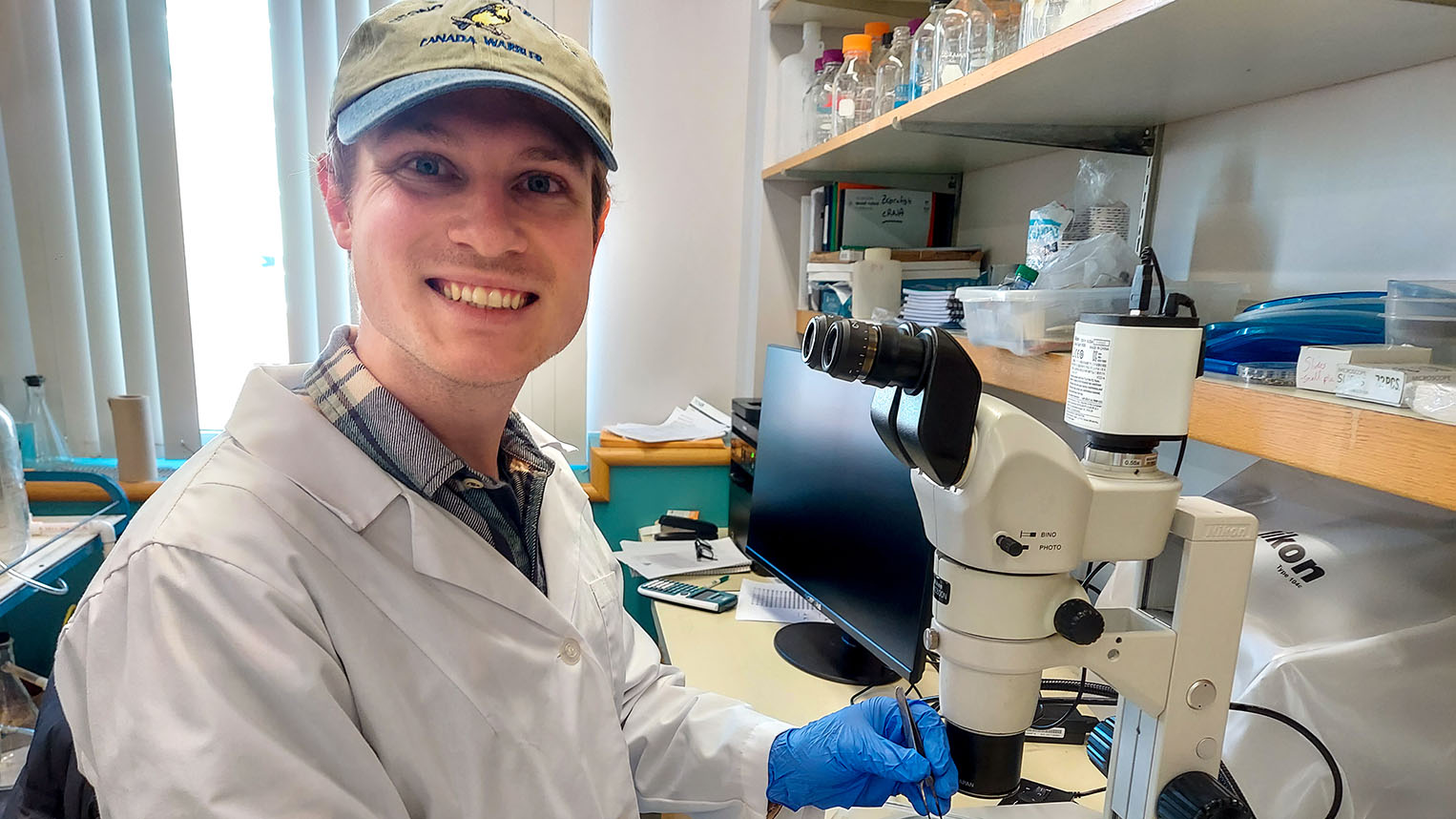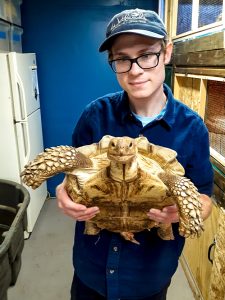
The Emergence of Blue Crabs in Casco Bay with Brandon Henry
By Ilaria Bardini, Media Intern
As the world’s climate changes, ecosystems and the animals that inhabit them are changing as well. This holds true for blue crabs, Callinectes sapidus, which are beginning to populate areas along the coast of Maine. Native to warmer waters along the U.S. coastlines, the rising temperatures in the Gulf of Maine are attracting these crustaceans to Casco Bay. Although their populations are currently low in the area, their aggressive nature is harmful to species of native bivalves which are essential to Maine fisheries. The need for cross-dimensional tools and skills to examine the reasons for shifts in animal behavior and location, like that of Callinectes sapidus, is one of the focuses of the NSF EPSCoR Track-1 Maine-eDNA grant.

Brandon Henry, a graduate student at the University of Maine working on the NSF EPSCoR Track-1 Maine-eDNA grant, is researching the novel emergence of blue crabs along the coast of Maine, specifically Casco Bay. Advised by Erin Grey (Assistant Professor of Aquatic Genetics in the School of Biology and Ecology), Henry is part of a thematic goal within Maine-eDNA, which, as he explained, “focuses on species shifting range for invasive species or natural range expansion, such as the case with blue crabs.” Blue crabs are an example of natural range expansion. However, their migration to the warming waters of Casco Bay has raised many questions as they are possibly detrimental to the health of other marine species.
“Blue crabs are very aggressive and have powerful claws. They can be particularly devastating to younger shellfish.” With shellfish aquaculture being increasingly important to Maine’s economy, understanding blue crab behavior and interactions with other marine species is vital. Because of this, Henry is investigating questions regarding blue crabs’ diet, habitat preferences, reproduction, and ability to survive Maine’s cold winters.
In order to answer these inquiries, Henry works with a number of organizations such as the Wells National Estuarine Reserve and the Casco Bay Estuary Partnership. “The Marine Invader Monitoring and Information Collaborative (MIMIC), a partnership between Wells National Marine Reserve and Casco Bay Estuary Partnership, is a volunteer opportunity to monitor species that don’t naturally occur in Casco Bay.” Henry stresses the importance of volunteer participation in his research, describing how they are given eDNA collection kits, which are glass tubes with filters meant to strain detritus and stored for further analysis. Henry examines these samples in search of blue crab larvae as their presence may give hints regarding reproductive success among blue crabs in the area. So far, no larvae have been detected during Henry’s analyses.
As well as examining water samples using eDNA, Henry detects blue crab presence with baited commercial grade lobster traps, trawl nets, and telemetry devices. Using GIS software, he maps out sedimentation along the Coast of Maine, pinpointing the areas of softer and sandy sediments that blue crabs, due to their traditional environments, may more likely be found.
One of the more pressing questions of Henry’s research focuses on blue crabs’ wintering ability. “We’re hoping to track where they are wintering. Winter conditions are the biggest constricting factors regarding how and where they can survive.” With blue crabs’ low tolerance for colder waters, the significance of their possible ability to survive through the year in the Gulf of Maine may have broader implications.
The Gulf of Maine is warming at a significantly faster rate than the rest of the world’s oceans and with these shifts come other changes in the environment and animal habitation.“This project may offer a window into how other creatures may be shifting their ranges.” Says Henry “It’s a really great way of getting an early insight into what impacts climate change may have in the Gulf of Maine.”
